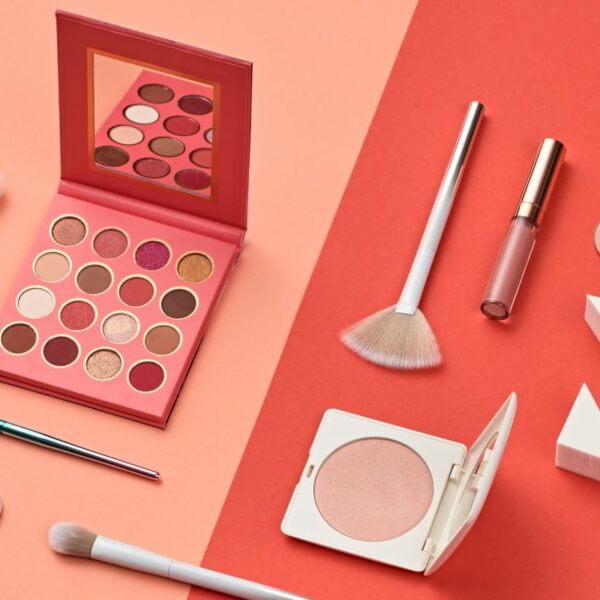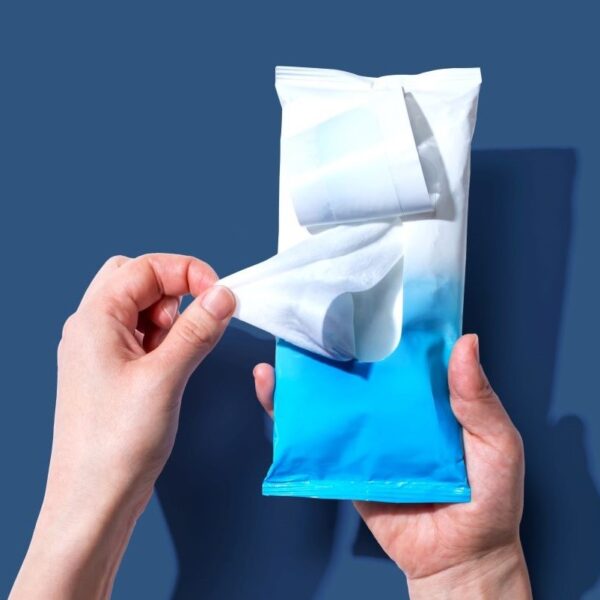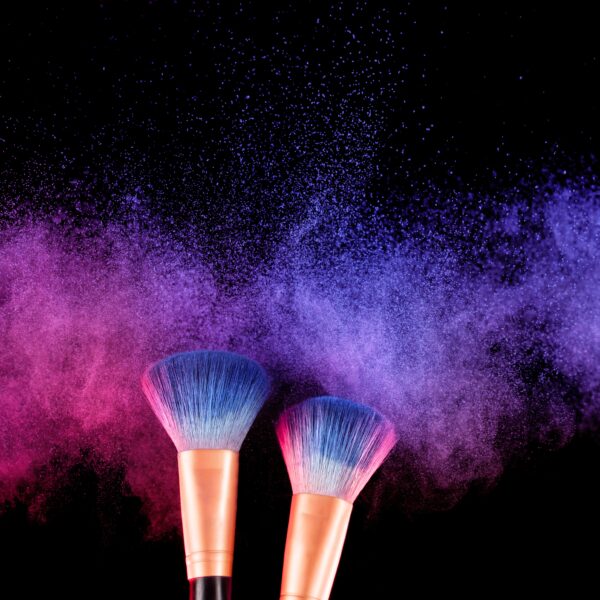Initially produced in the 1990s to replace parabens in body care products, ethylhexylglycerin is a popular and viable ingredient for many formulations. It also adds several benefits as a fragrance, conditioning agent, humectant, and deodorizer.
This relatively mild ingredient is well-tolerated by most individuals and considered safe for use in personal care products. It is non-irritating, non-sensitizing, and considered environmentally friendly, as it is readily biodegradable and does not accumulate in the environment.
What is Ethylhexylglycerin?
Ethylhexylglycerin (C11H24O3) also known as octyl glycerin, is a glyceryl ether commonly used as a part of a preservative system in cosmetic applications. Ethylhexylglycerin is derived from vegetable glycerin acquired from plant-based sources such as palm or soybean.
Ethylhexylglycerin is then produced by reacting vegetable glycerin with Ethylhexanol. The reaction between glycerin and Ethylhexanol is a transesterification reaction. In this type of reaction, the glycerin molecule is broken down into its parts, which are then recombined with the Ethylhexanol. The reaction produces Ethylhexylglycerin, which is an ester. It is paraben-free and acts as an adequate replacement for traditional preservatives. It has different methods of synthesis. Ethylhexylglycerin is also synthesized using 2-Ethylhexanol as starting material.

Ethylhexylglycerin is typically a clear, colorless liquid used in personal care products, such as skincare and hair care products, as a preservative and a conditioning agent. It’s approved for use in cosmetics by regulatory agencies such as the U.S. Food and Drug Administration (FDA) and the European Union (EU).
Ethylhexylglycerin is often used with other preservatives, such as phenoxyethanol, to provide broad-spectrum antimicrobial protection and extend the shelf life of a product. Additionally, the skin conditioning and moisturizing benefits of ethylhexylglycerin make it a popular ingredient in skin care products.
Use of Ethylhexylglycerin in Cosmetics and Personal Care Products
Ethylhexylglycerin is used in various cosmetic products because it is compatible with other common ingredients. It is effective in emulsions, creams, serums, lotions, and surfactant-based products such as shower gels, facial cleansers, and shampoos.
It is compatible with pigments and colloidal ingredients, making it suitable as a preservative in sunscreens and other color cosmetics.
Additionally. Ethylhexylglycerin has many other functions and acts as a skin emollient that leaves the skin and hair soft while hydrating and lubricating the skin surface. Let’s explore some of its benefits.
Applications in Cosmetics and Personal Care Products
Preservative Booster
Methods of enhancing the efficacy of traditional preservative actives so that lower levels of these materials can be used have become increasingly of interest.
Ethylhexylglycerin enhances the antimicrobial efficacy of a product when combined with traditional preservatives such as Phenoxyethanol, Caprylyl Glycol, and 1,3 Propanediol. It boosts antimicrobial efficacy and enables lower concentrations of typically used preservatives, including parabens or triclosan.
Fragrance Fixative
Some products lose their fragrance character rapidly. For example, the top and middle notes evaporate. Ethylhexylglycerin can act as a booster and fixative, extending the perfume’s life by preserving the fragrance’s character and intensity. Depending on the perfume composition, ethylhexylglycerin can increase the scent or prolong the perception of the smell. The boosting and fixating of fragrance ingredients often allow a lower concentration of the perfume in the final formulation.
Skin Conditioning Agent
Emollient selection is critical to the character of a cosmetic product. Rich creams with refatting properties benefit from high contents of slow-spreading emollients.
Combining fast, medium, and slow-spreading emollients leaves skin feeling soft and smooth. Ethylhexylglycerin is a medium-spreading emollient with a spreading coefficient of about 700 mm2/10 min. The spreading properties are similar to dodecyl oleate, hexyl decanol, or cetearyl isononanoate.
Humectancy
Ethylhexylglycerin acts as a humectant and hydrates skin and hair without leaving them feeling heavy or sticky. It draws moisture to the upper layers of the skin and locks it over the surface for deeper hydration.
Deodorizing
Ethylhexylglycerin is a good wetting agent that disrupts surface tension and potentially damages the cell membrane of bacteria, preventing their growth. Due to this antimicrobial action, it is also used as a deodorizing ingredient. It inhibits the growth and multiplication of odor-causing gram-positive bacteria while gentle on the skin.
Properties of Ethylhexylglycerin
| Appearance at 25 °C | Clear, colorless liquid |
| pH (10% Aqueous) | 6.5-7.15 |
| Viscosity, cps at 25°C | 60-75 |
| Density | 0.962 |
| HLB | 7.5 |
| Refractive Index | 1.4490 to 1.4530 |
| Solubility | Partially water soluble |
| Odor | Odorless |
| Shelf Life | 36 months |
| Storage Condition | Store in the original container at room temperature. The product must be protected from direct sunlight. Once opened, containers should be firmly re-sealed. |
Ethylhexylglycerin Formulation Considerations
- Ethylhexylglycerin is effective in pH ranges from 2 to 12
- Typically incorporated into the oil phase of the formulation or at the end of the manufacturing process
- Add to the water phase (below 80°C) or during the cool-down phase (~40°C)
- The raw material is resistant up to high temperatures of 120°C
- Recommended dosage falls between 0.3% to 1.0%
- Recommended maximum use concentration of 0.6% in aerosol deodorants
Ethylhexylglycerin Formulation Phases
Moisturizing Cream
| Phase | INCI Name | Trade Name | % Weight |
|---|---|---|---|
| A | Glycerin, Caprylic/Capric Triglycerides, Aqua, Sucrose Laurate, Sucrose Stearate | Sucragel® XL | 8.0 |
| B | – Butyrospermum Parkii (Shea) Butter – Caprylic/Capric Triglyceride – Cichorium Intybus Extract – Microcrystalline Cellulose, Cellulose Gum, Xanthan Gum | Shea Butter – Caprylic/Capric Triglyceride – Chicory Seed Oil – Sucrathix VX | 15 7.5 0.10 2.50 |
| C | Aqua | Water | 65.65 |
| D | – Entada Phaseoloides Bark/Seed Extract – Parfum – Phenoxyethanol, Ethylhexylglycerin | – Entadine® – Fragrance – Euxyl® PE9010 | .50 .25 .50 |
Formulation Procedure
- Transfer Phase A into a beaker
- Mix Phase B in a beaker and heat to 60°C
- Add Phase B to Phase A very slowly over 5 minutes using an overhead stirrer
- Heat the water to 70°C
- Disperse the Sucrathix VX into the water phase using a homogenizer
- Slowly add Phase C into the oily gel under constant stirring
- Homogenize for 5 minutes until the emulsion is homogenous
- Once cooled, add Phase D
Ethylhexylglycerin Safety & Regulatory Considerations
Ethylhexylglycerin is deemed safe, non-toxic, and non-irritant to the skin upon oral administration and dermal application.
The European Union, the United States Food and Drug Administration (FDA), and the Cosmetic Ingredient Review (CIR) Expert Panel regulate the use of ethylhexylglycerin.
The European Chemicals Agency (ECHA) regulates ethylhexylglycerin in the European Union, while the European Inventory of Existing Commercial Chemical Substances (EINECS) lists it. It is also subject to the Cosmetic Regulation (EC) No 1223/2009, which sets out the safety requirements and restrictions for using cosmetic ingredients.
The FDA regulates ethylhexylglycerin in the United States as a cosmetic ingredient. It’s considered safe for cosmetic products at concentrations up to 1%
The Cosmetic Ingredient Review (CIR) Expert Panel, an independent group of scientific and medical experts, has also evaluated the safety of ethylhexylglycerin and concluded that it is safe for use in cosmetic products at concentrations up to 2%.
Health Effects of Ethylhexylglycerin
Ethylhexylglycerin is generally considered a safe and well-tolerated ingredient. It has a low risk of causing skin irritation or allergic reactions and is not a known sensitizer or allergen.
However, like any other cosmetic ingredient, ethylhexylglycerin can cause skin irritation or allergic reactions in some people, particularly those with sensitive skin or pre-existing skin conditions. In rare cases, contact dermatitis, an inflammatory skin reaction characterized by redness, itching, and swelling, is a possible skin reaction.
According to the Cosmetic Ingredient Review Expert Panel, ethylhexylglycerin is not a primary irritant or sensitizer. It does not appear to have significant potential to cause allergic contact dermatitis or allergic reactions. In in-vitro and in-vivo tests it is mostly proven to be non-mutagenic and has No phototoxic or photosensitizing effects.
Identification Numbers
| CAS Number | 70445-33-9 |
| EC Number | 408-080-2 |
| ELINCS Name | 3-(2-ethylhexyloxy)propane-1,2-diol |
| ELINCS Number | 408-080-2 |
| REACH Registration Number | 01-0000015745-65-0002 |
Fun Facts About Ethylhexylglycerin
- Ethylhexylglycerin was first introduced to the cosmetics industry in the 1990s as an alternative to parabens, which were under scrutiny for their potential health risks.
- Ethylhexylglycerin is sometimes labeled as a “natural” preservative because it is derived from grains and plants but is a synthetic compound.
- Ethylhexylglycerin has antibacterial properties, and it may be effective against antibiotic-resistant bacteria.




